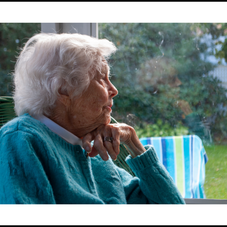Bronchoscopy; Nursing Implications
Nursing Responsibilities
• Provide routine preoperative care as ordered. Bronchoscopy is an invasive procedure requiring conscious sedation or anesthesia. Care provided prior to the procedure is similar to that provided before many minor surgical procedures.
• Provide mouth care just prior to bronchoscopy. Mouth care reduces oral microorganisms and the risk of introducing them into the lungs.
• Bring resuscitation and suction equipment to the bedside. Laryngospasm and respiratory distress may occur following the procedure. The anesthetic suppresses the cough and gag reflexes, and secretions may be difficult to expectorate.
• Following the procedure, closely monitor vital signs and respiratory status. Possible complications of bronchoscopy include laryngospasm, bronchospasm, bronchial perforation with possible pneumothorax or subcutaneous emphysema, hemorrhage, hypoxia, pneumonia or bacteremia, and cardiac stress.
• Instruct to avoid eating or drinking for approximately 2 hours or until fully awake with intact cough and gag reflexes. Suppression of the cough and gag reflexes by systemic and local anesthesia used during the procedure increase the risk for aspiration.
• Provide an emesis basin and tissues for expectorating sputum and saliva. Until reflexes have returned, the client may be unable to swallow sputum and saliva safely.
• Monitor color and character of respiratory secretions. Secretions normally are blood tinged for several hours following bronchoscopy, especially if biopsy has been obtained. Notify the physician if sputum is grossly bloody. Grossly bloody sputum may indicate a complication such as perforation.
• Collect postbronchoscopy sputum specimens for cytologic examination as ordered. Cells in the sputum may be examined if a tumor is suspected.

Client and Family Teaching
• Fiberoptic bronchoscopy requires 30 to 45 minutes to complete. It may be done at the bedside, in a special procedure room, or in the surgical suite. • The procedure usually causes little pain or discomfort, because an anesthetic is given. You will be able to breathe during the bronchoscopy.
• Some voice hoarseness and a sore throat are common following the procedure.Throat lozenges or warm saline gargles may help relieve discomfort.
• You may develop a mild fever within the first 24 hours following the procedure. This is a normal response.
• Persistent cough, bloody or purulent sputum, wheezing, shortness of breath, difficulty breathing, or chest pain may indicate a complication. Notify your physician if they develop.
To pass your Ordre des infirmières et infirmiers du Québec OIIQ-RN Exam go to: www.rn101questionbank.com
To pass your Ordre des infirmières et infirmiers auxiliaires du Québec OIIAQ-LPN Exam go to: www.rn101lpnquestionbank.com
Follow us on Instagram for more free nursing materials: https://www.instagram.com/jimbriant/

























